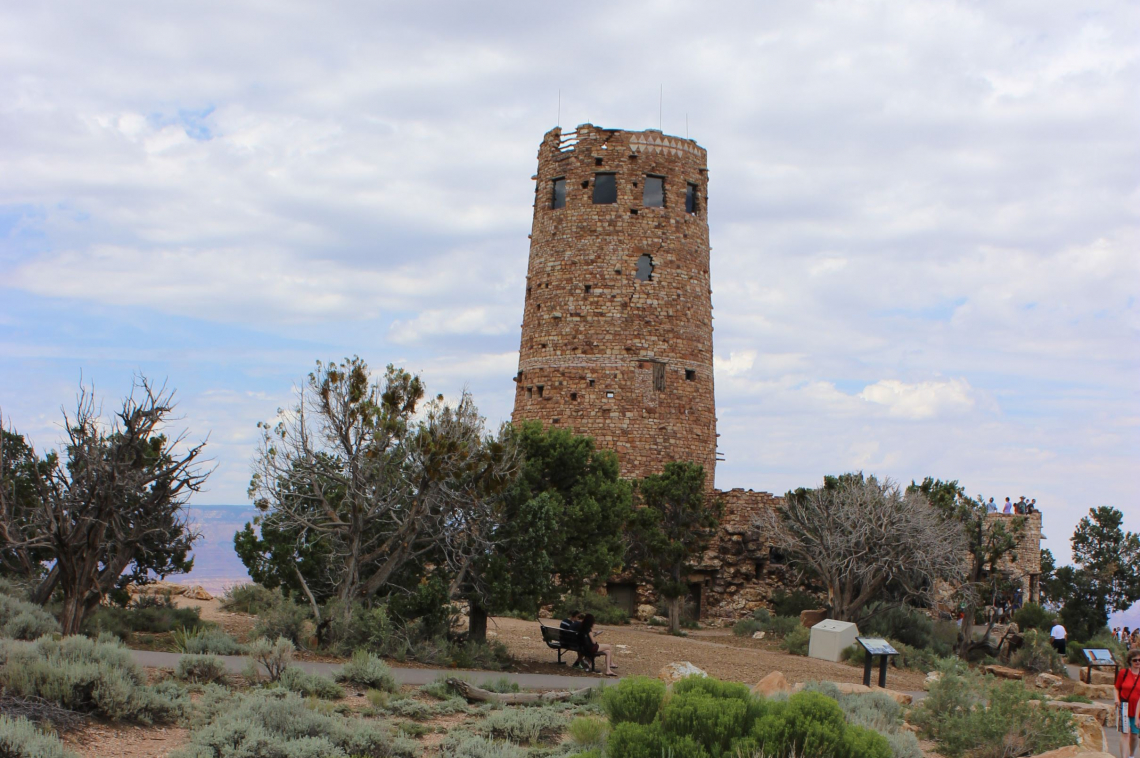
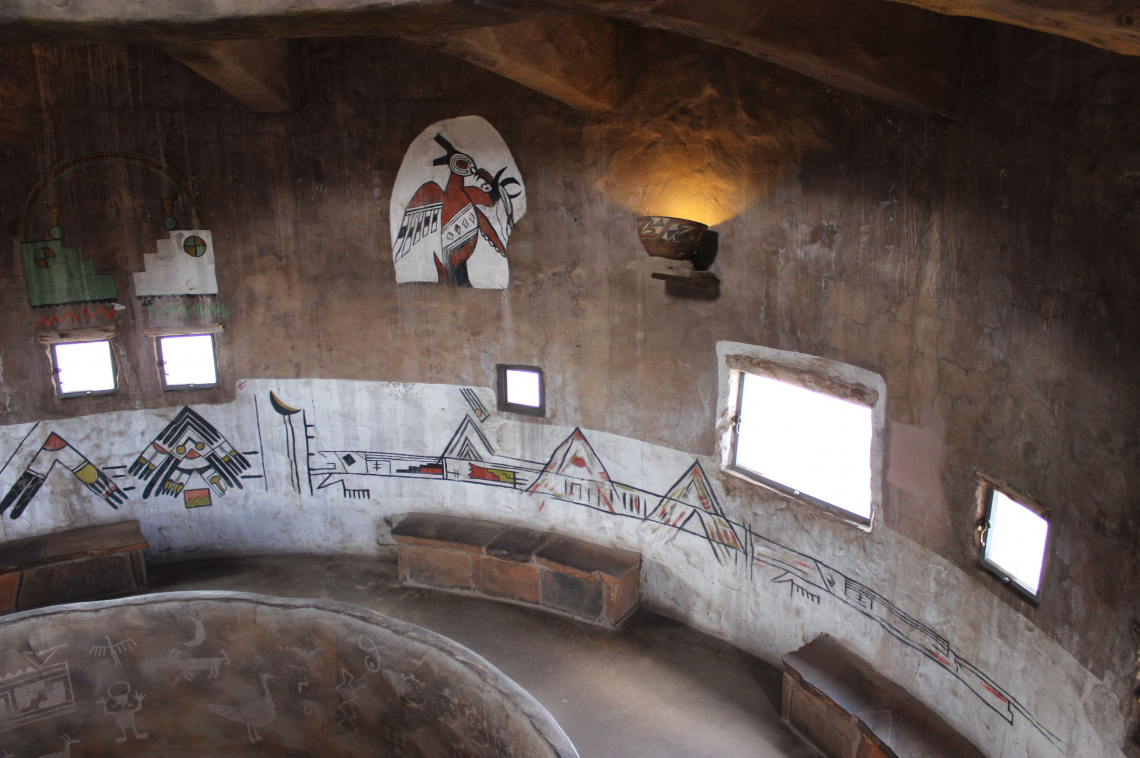
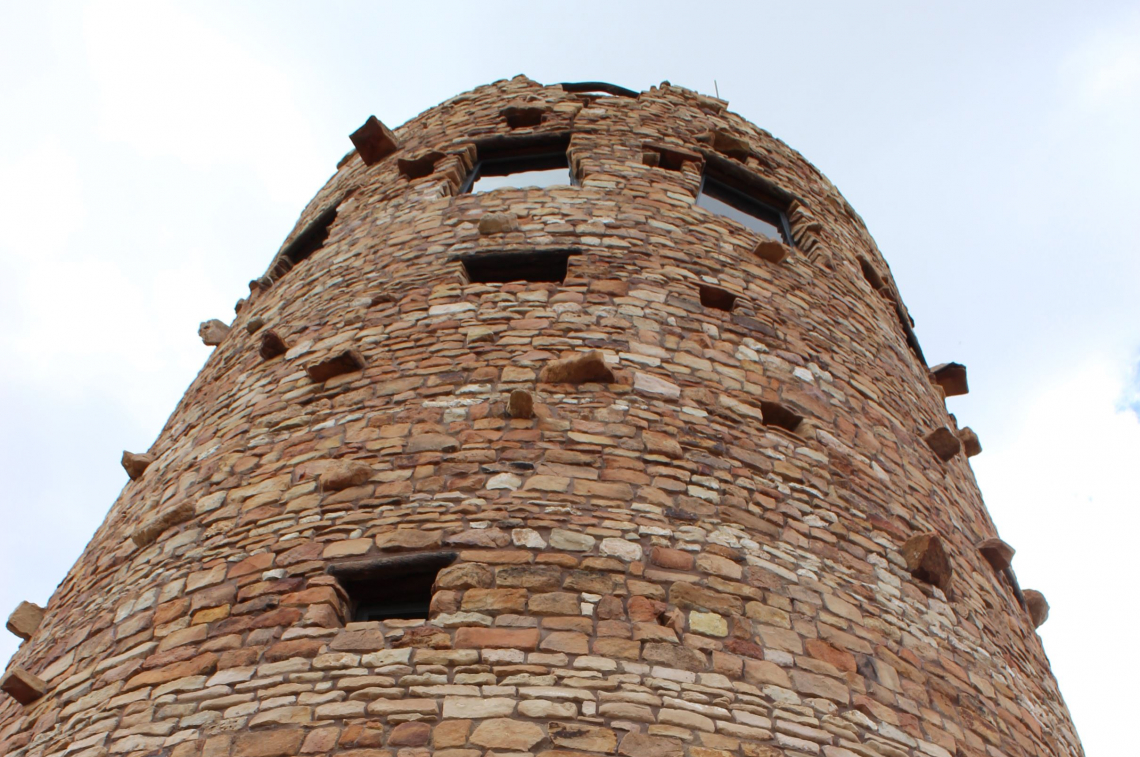
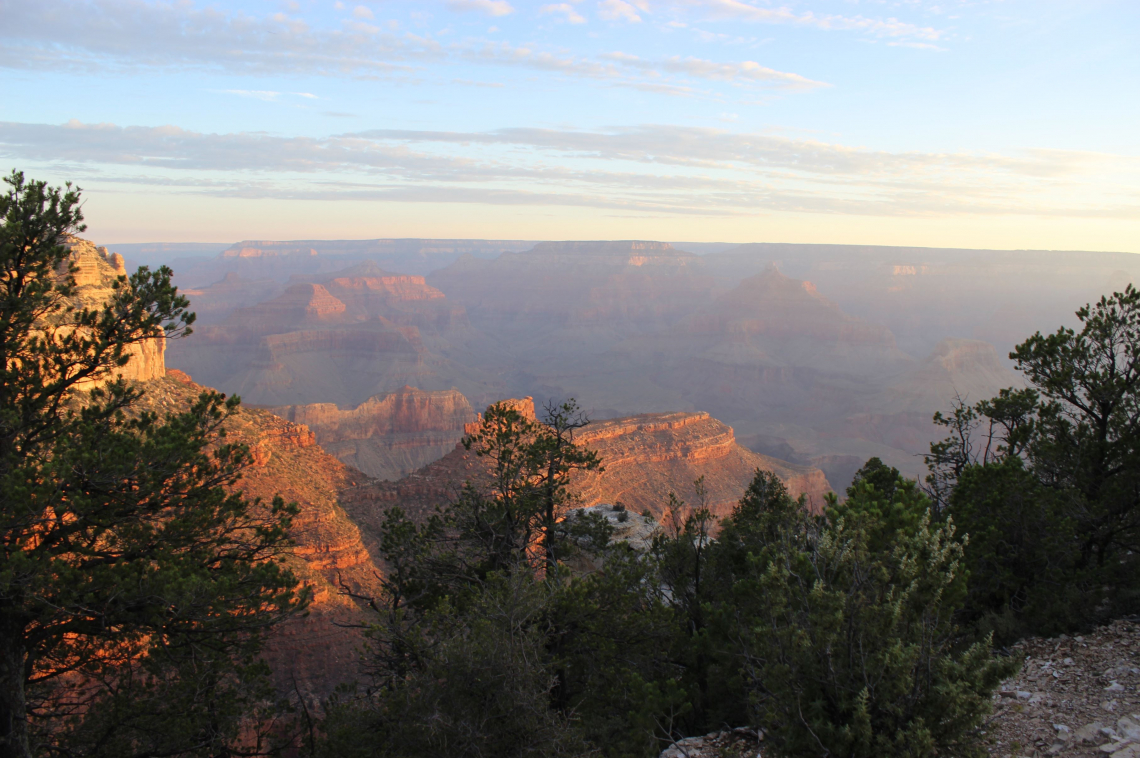
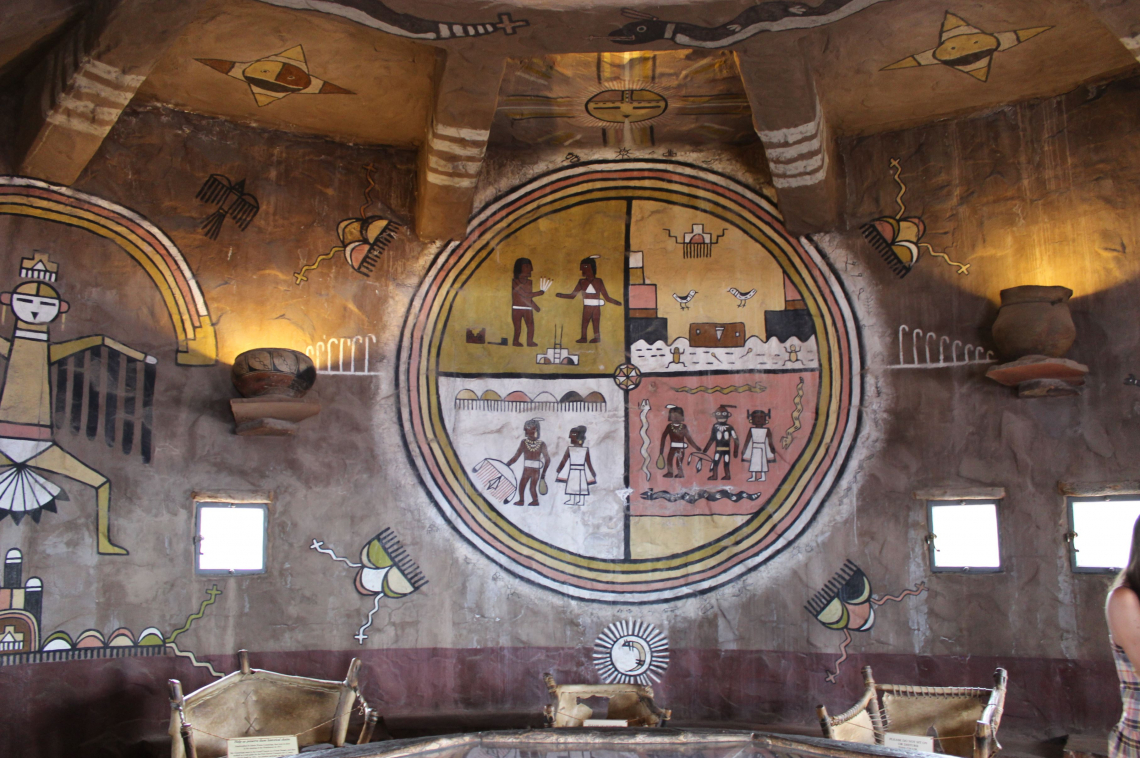
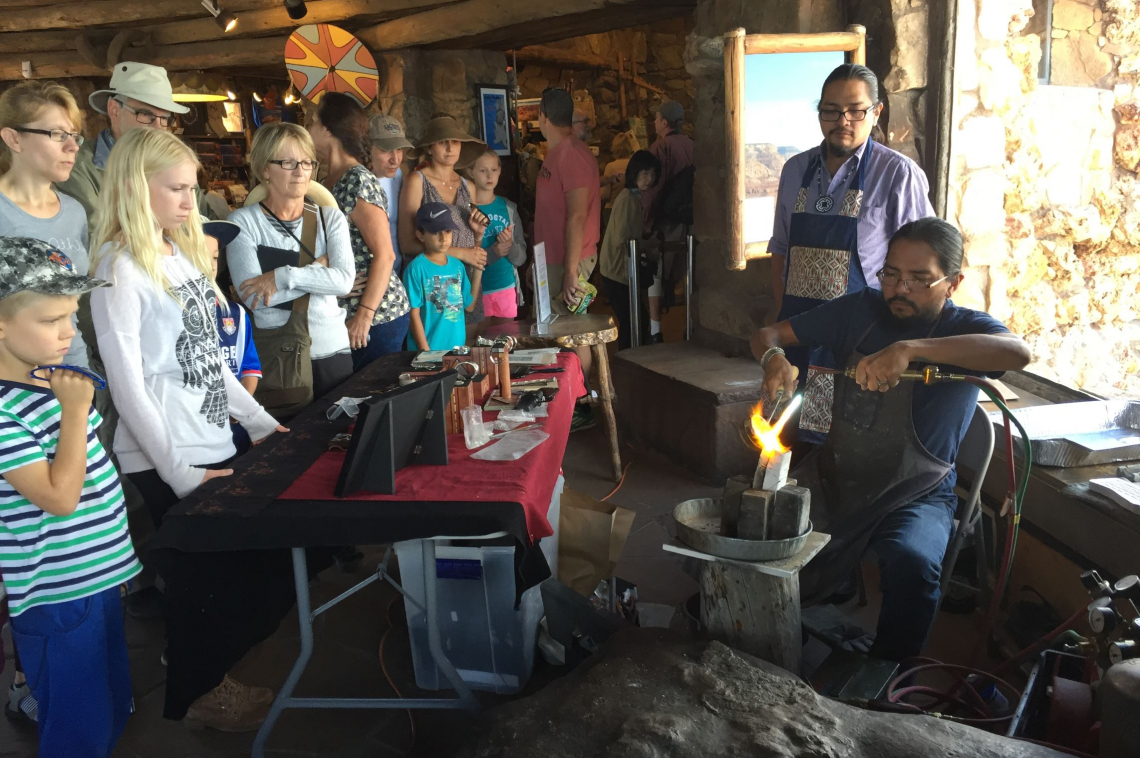
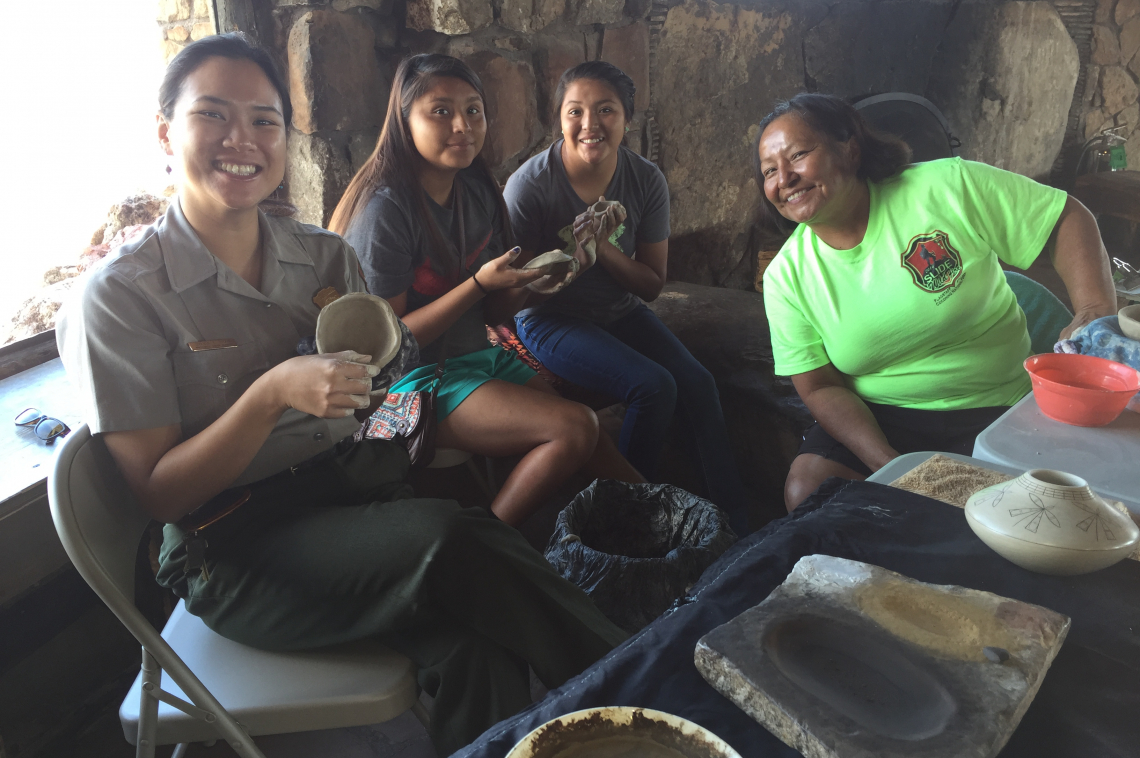
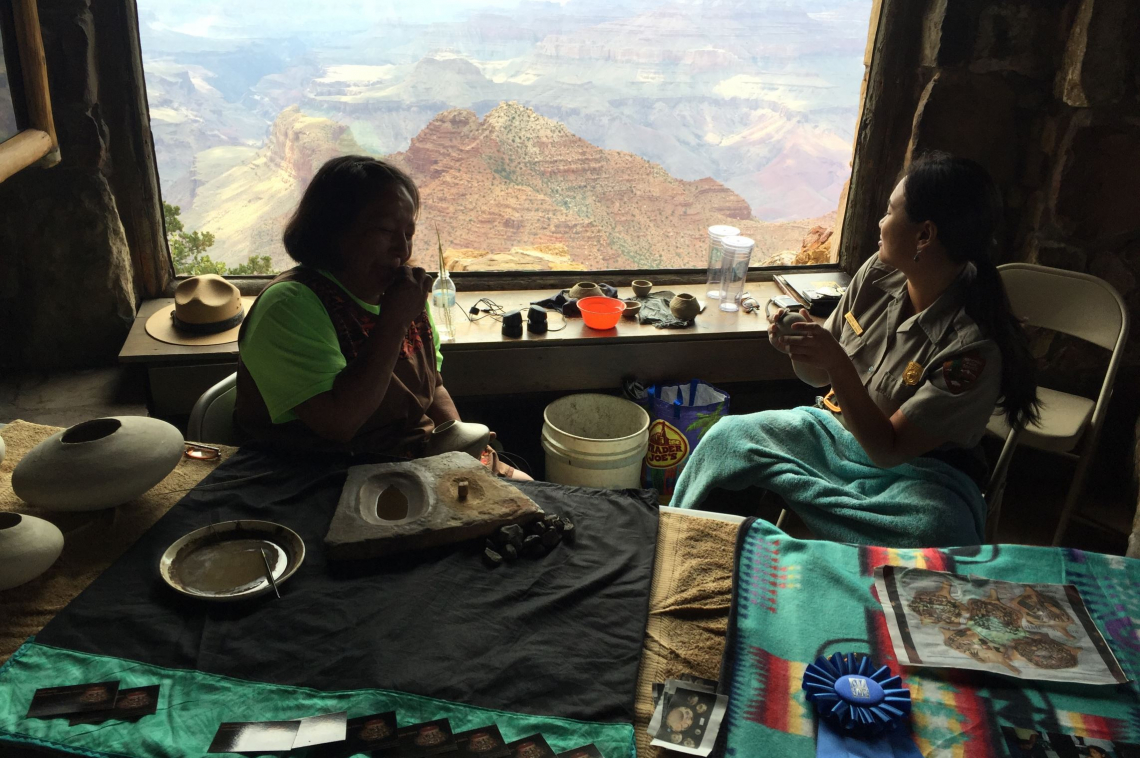
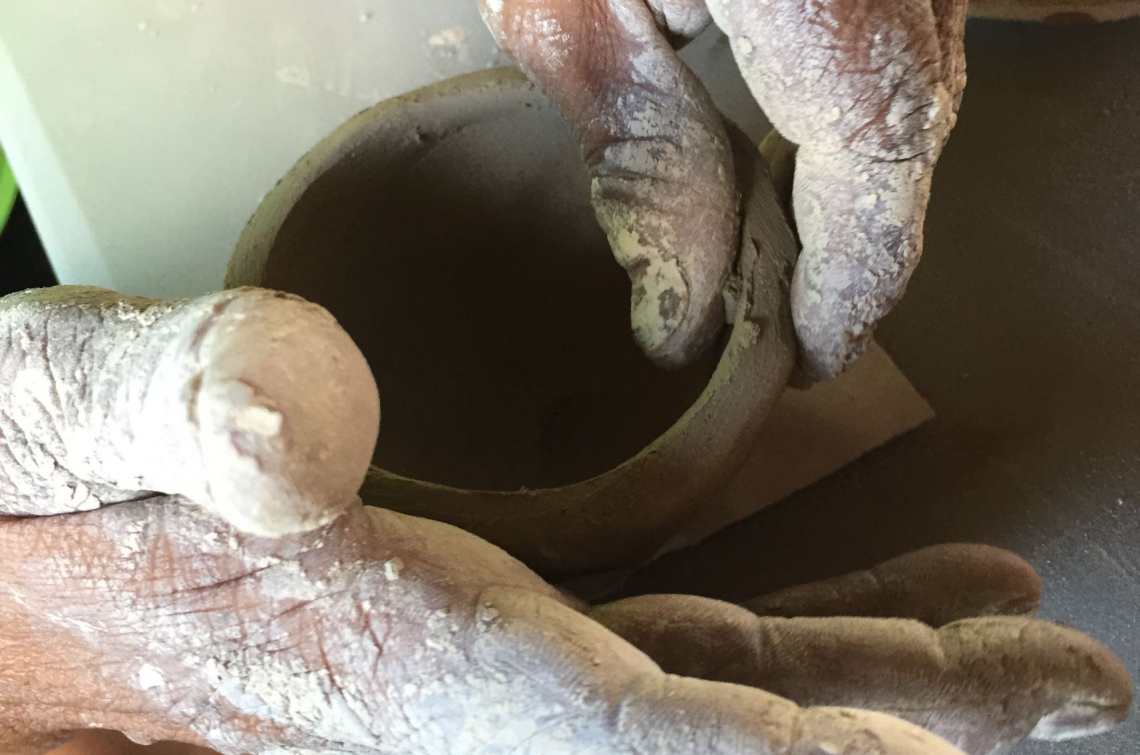
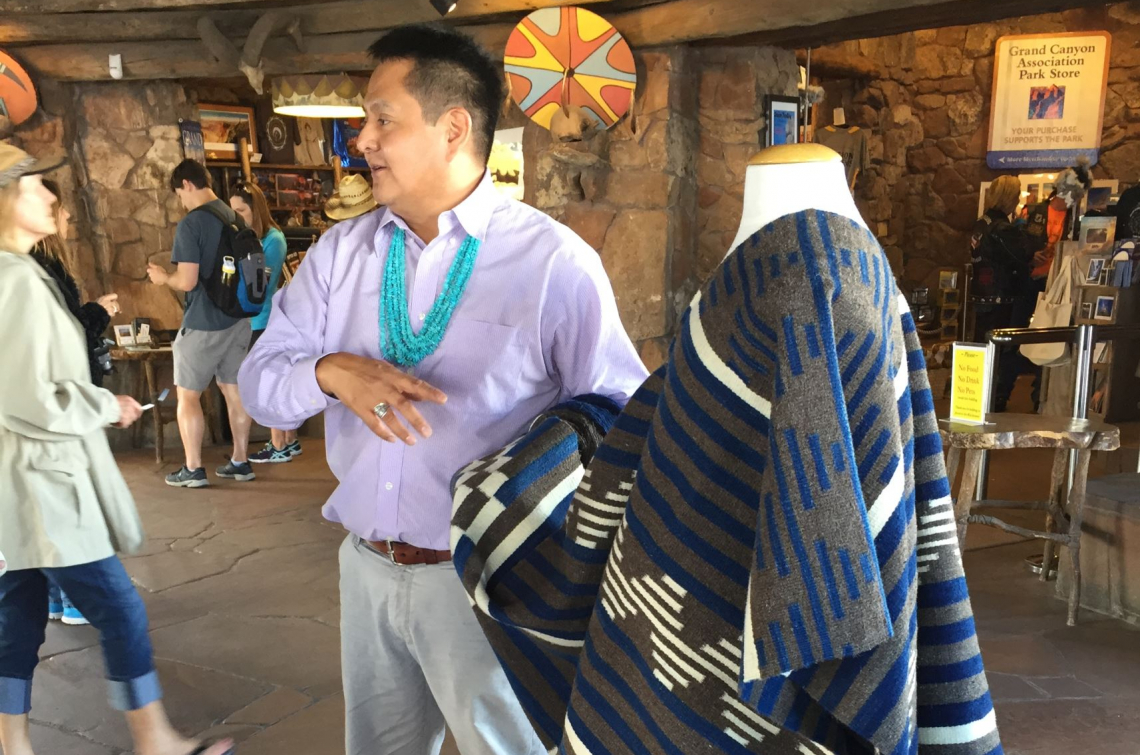
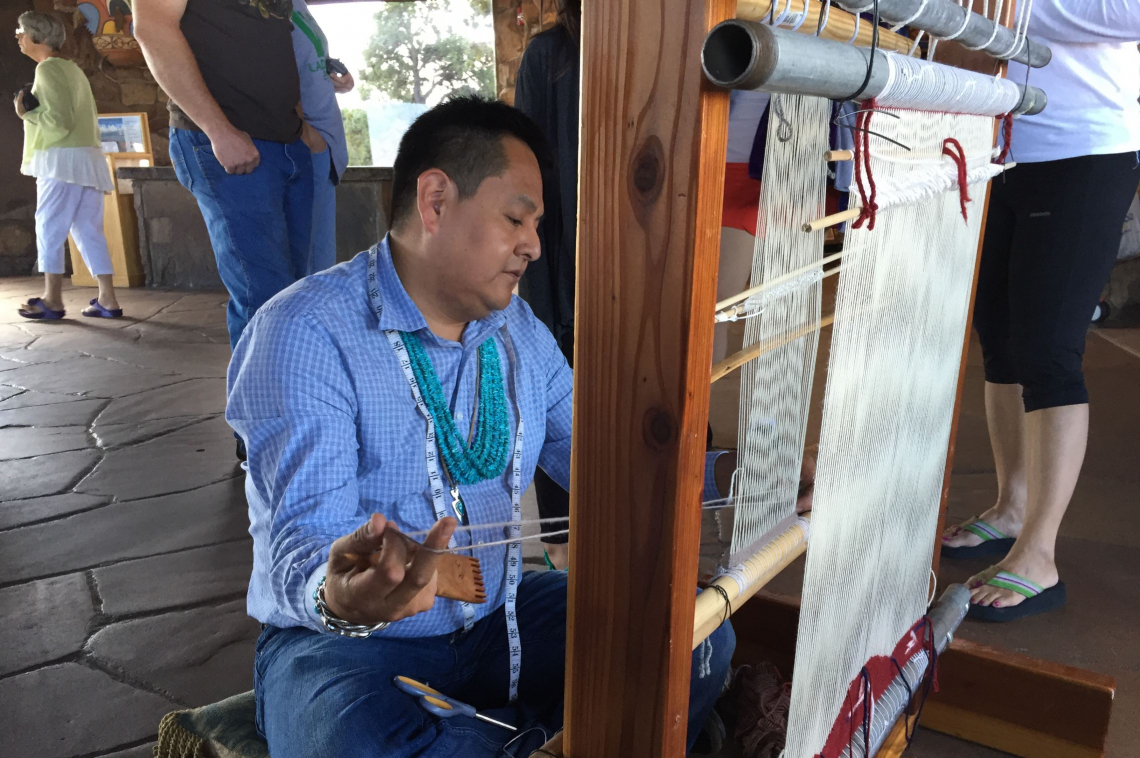
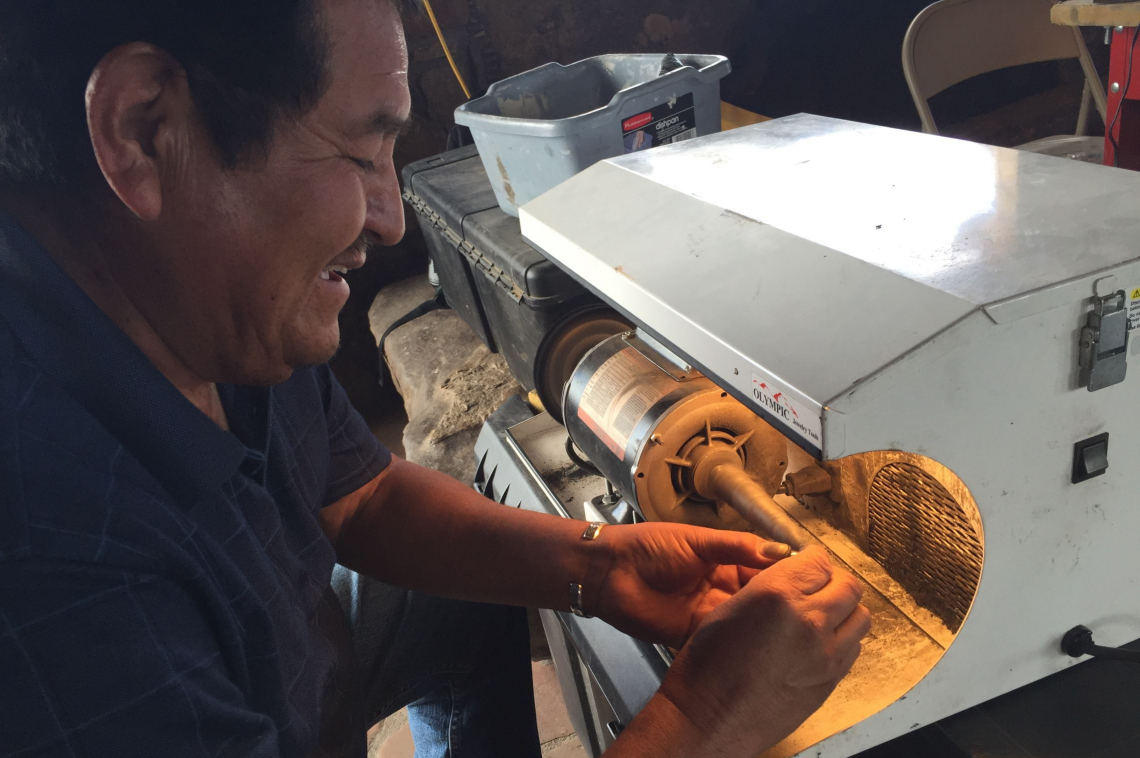
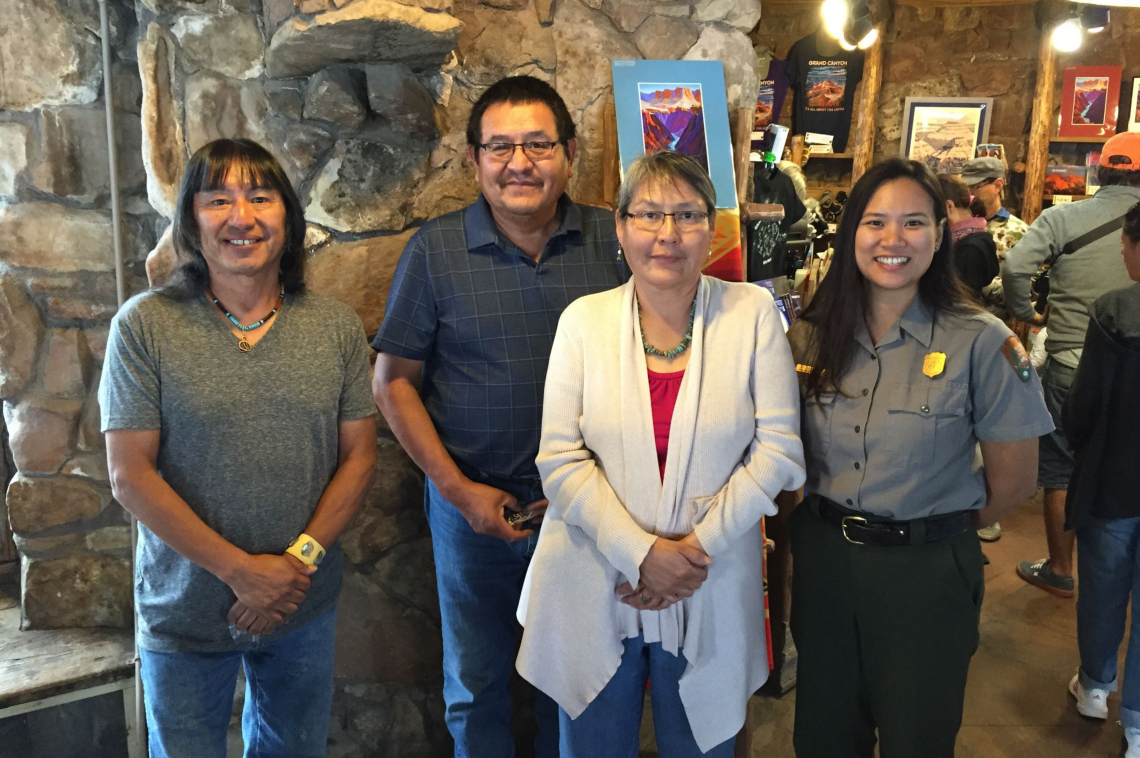
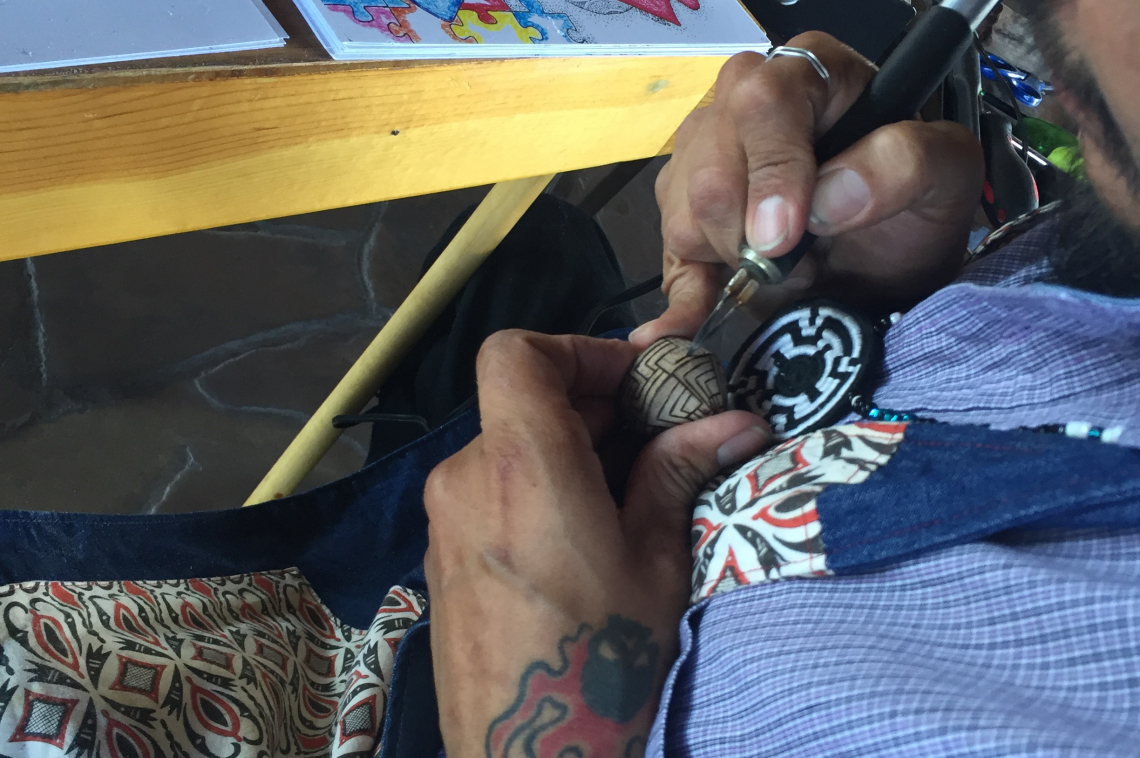
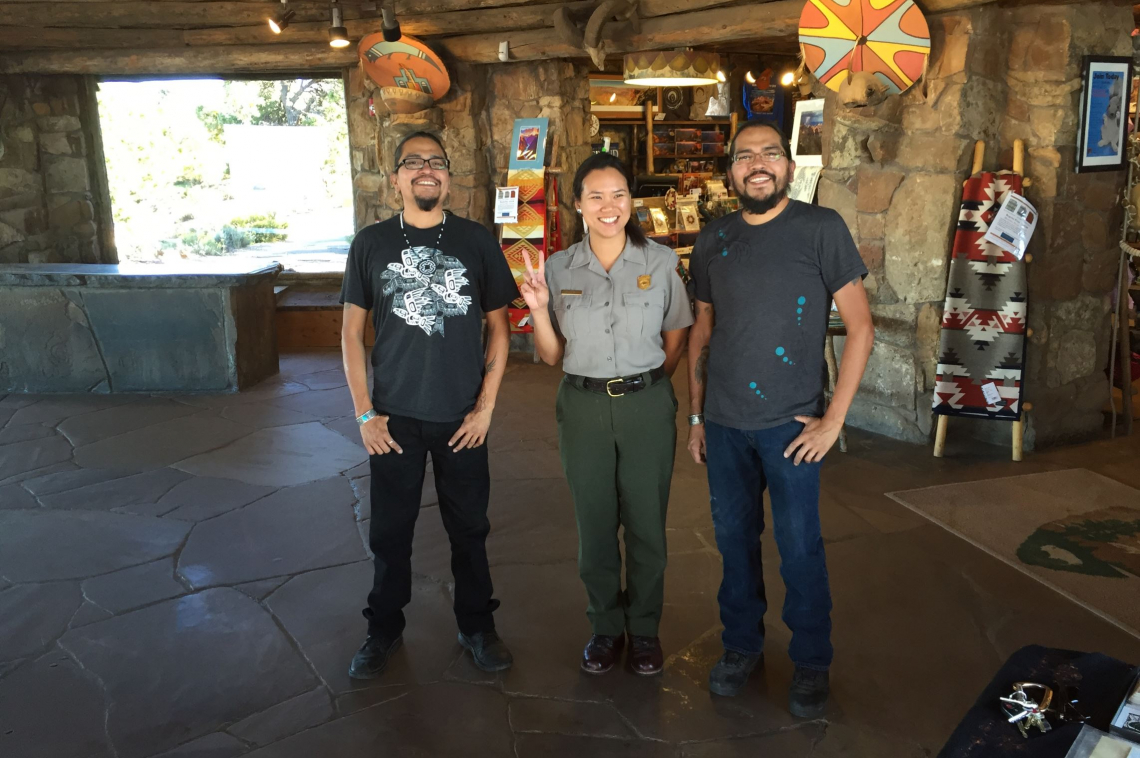
In this project, the 11 Native American tribes traditionally associated with the Grand Canyon will work with the National Park Service to repurpose the Desert View Area and historic Watchtower from gift shops into an inter-tribal cultural heritage center and marketplace. Programming will be tribally-driven and the physical space will conserve the Watchtower and its Hopi murals while establishing permanent and authentic cultural interpretation tools for all visitors.
The Partnership
The repurposing of Grand Canyon National Park’s Desert View Visitor Area into an inter-tribal cultural heritage place is the dream of the park’s Inter-tribal Advisory Council and a collaboration by deeply committed partners, who include:
- Grand Canyon National Park (GRCA)
- Inter-tribal Advisory Council (ItAC), representing the eleven tribes and bands traditionally associated with the Grand Canyon:
- Hopi
- Navajo
- Zuni
- Havasupai
- Hualapai
- Yavapai-Apache
- Five bands of Southern Paiute, represented by Kaibab Paiute
- AIANTA
- BIA
- Grand Canyon Association (GCA)
- American Express Foundation
The ItAC Desert View Vision Statement
We share Desert View as a symbol to bond the peoples of yesterday, today and tomorrow. The Watchtower serves as a connection to embrace the heartbeats of our peoples and visitors far and wide with the heartbeat of the canyon…We are still here.
Background
In 2013, Grand Canyon National Park established the Inter-tribal Advisory Council in partnership with the Canyon’s associated tribes. The council’s purpose is to facilitate open collaboration and maintain ongoing dialogue between the tribes and the park on issues such as cultural and natural resource protection and first voice cultural interpretation.
Accordingly, the Council, the park and their partners are heavily focused on repurposing the Desert View Visitor Area, inside the park’s eastern entrance, into an Inter-tribal cultural heritage center, a place for the tribes to call their own and for visitors to learn about the Canyon from tribal perspectives.
Desert View facilities available to the tribes include the famous Watchtower (designed by Mary Colter in 1933 “to introduce the depths of Native culture to the traveler”), the Visitor Center (which will be transitioned to a tribal information center and point of departure for tours to tribal communities), some housing, vast parking areas, pathways, the view point itself, and the legendary landscape.
In January 2015, GRCA bought out the concessionaire contract for retail sales at Desert View (for more than $3 million) and cleared out the lower “kiva” level of the Watchtower for tribal programming.
Since late March 2015, with funding provided by the BIA, through AIANTA, the ItAC and its partners have been engaged in an intense strategic planning process to create 1-3 and 3-5 year action plans for accomplishing the transition and establishing identified tribal programming and activities, such as:
- First voice interpretive programming, exhibits, and media throughout the park
- Tribal elder and youth development programs
- Cultural heritage demonstrations: arts, foods, direct sales to the public
- Tribal employment and internship opportunities
- Tribal tourism opportunities
- Conservation of the Watchtower and its 1933 Hopi murals (by Hopi artist Fred Kabotie)
- Establishment of a model program for other national parks to emulate
Programming Currently in Place at Desert View
- Cultural Demonstrations – With funding from the Grand Canyon Association, tribal cultural presentations have been offered for two consecutive summers. Regional tribal artisans demonstrate their respective crafts and sell their products directly to the visiting public.
- Ancestral Lands Conservation Corps – A crew of 10 Native students began a summer program at Grand Canyon in May 2015, under a cooperative agreement with the Arizona Conservation Corps. Youth from the associated tribes will work on facility maintenance, interpretation and visitor services, vegetation, cultural resource preservation, and trails.
The American Indian Alaska Native Tourism Association's Role
GRCA and ItAC invited AIANTA to join their partnership because of their strong interest in developing tourism to tribal communities associated with the Grand Canyon. Currently our role is primarily seeking funding to help launch this revolutionary program.
We secured $50,500 from BIA to pay for planning facilitation by Native owned OSIYO Planning Group. We submitted a grant proposal to ArtPlace America for $500,000 under their program for creative community place-making. We expect to hear in June whether our proposal was successful.
In the future we will provide technical assistance to the tribes as they develop their tourism objectives.
A Centerpiece for the 2016 National Park Service Centennial Commemoration
GRCA is planning a Centennial celebration showcasing the Desert View Inter-tribal Cultural Heritage Center on the 100th birthday of the NPS, August 25, 2016, with full cultural programming, tribal, NPS, partners and other national leaders.
Grand Canyon Through Indian Eyes
This project is a legacy opportunity for all partners. Grand Canyon's first people will be home again. Visitors entering the park from the east will be introduced to the Canyon by descendants of its original human residents: artists, elders, teachers, families, their arts, languages, foods. Desert View will again be a window to the Canyon through Indian eyes.
LEARN MORE
See below for recent updates, press, and events from this project





